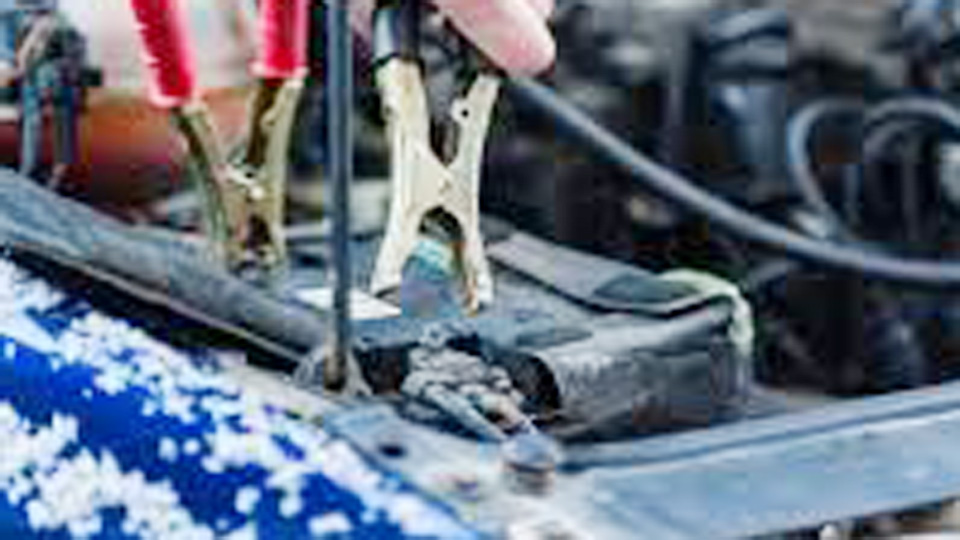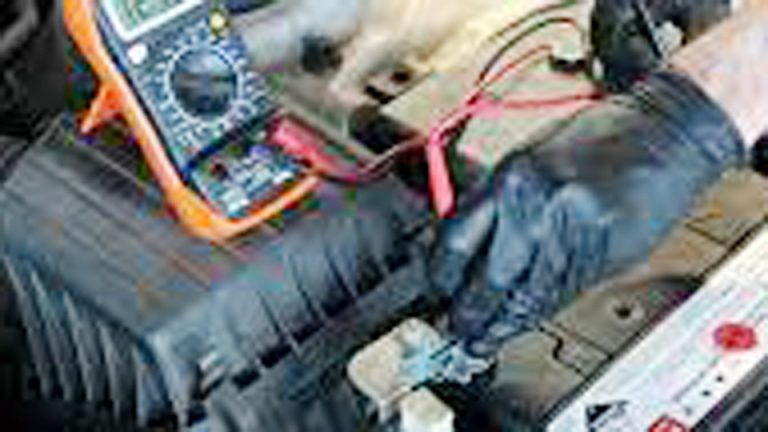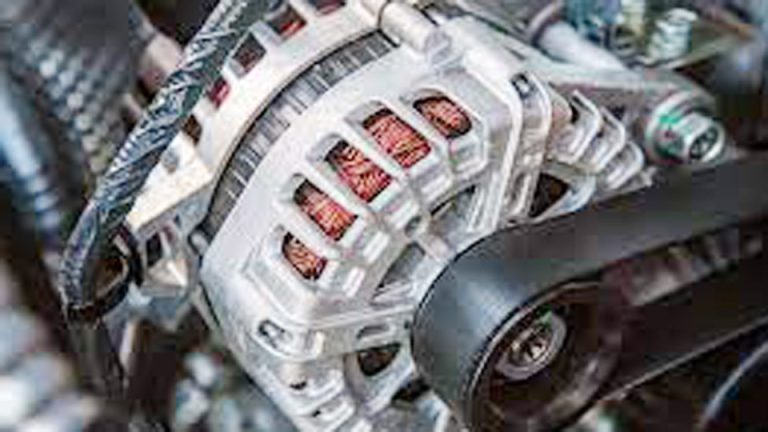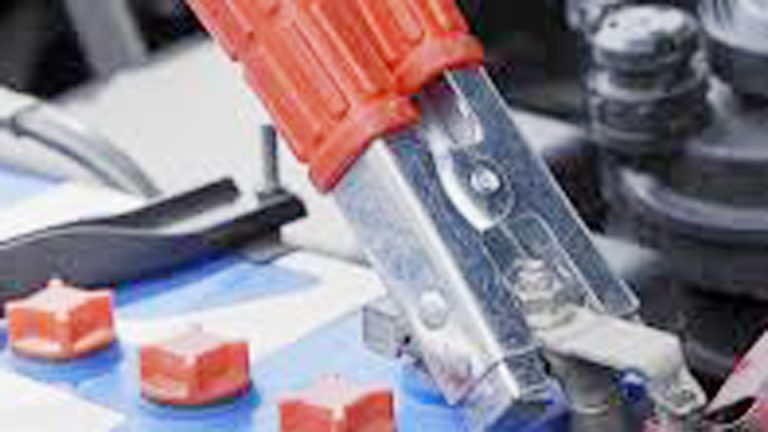I can’t tell you how many times I’ve seen drivers stuck on a cold morning, convinced their starter or alternator failed — when really, it was the battery. That’s when I get the familiar question: Does Cold Weather Affect Car Battery Performance? Absolutely. A battery is the heart of your car’s electrical system, and in freezing temps it has to work harder while producing less power.
I’ve swapped out countless dead batteries in winter, and the truth is most of those failures could’ve been avoided with a little attention beforehand. Knowing how cold weather impacts your battery can save you money, stress, and a whole lot of hassle when temperatures drop.

Image by scottsauto
Why Your Car Battery Matters in Cold Weather
Your car battery is the heart of your vehicle’s electrical system. It powers the starter motor, ignition, and all the electronics—like your headlights, radio, and heated seats—when the engine’s off. In cold weather, its job gets tougher. A weak battery can leave you stranded, compromise safety (no lights or wipers), and even strain your alternator, leading to costly repairs.
A reliable battery ensures your car starts, runs efficiently, and keeps you safe in harsh conditions. Plus, replacing it before it fails saves you from emergency costs, which can hit $150–$300 in the US for a tow and new battery.
How Cold Weather Impacts Car Battery Performance
What Happens to a Battery in Cold Weather?
Batteries rely on a chemical reaction between lead plates and an electrolyte solution (usually sulfuric acid) to produce electricity. Cold weather slows this reaction, reducing the battery’s ability to deliver power. At 32°F, a battery’s capacity drops by about 20%; at 0°F, it can lose up to 35%. That’s why a battery that’s fine in summer might fail when the temperature plummets. The cold also thickens engine oil, making the starter motor work harder, which demands even more from your battery.
Common Signs of Cold Weather Battery Issues
From my time in the shop, here’s what I see when batteries struggle in winter:
- Slow cranking: The engine turns over sluggishly, like it’s fighting to start.
- Dim lights: Headlights or interior lights are noticeably weaker.
- Clicking sounds: You hear rapid clicks when turning the key, indicating low power.
- Dead battery: No response at all when you try to start the car.
- Corrosion buildup: White, powdery gunk on the battery terminals, worse in cold, damp conditions.
I once had a customer with a 2015 Ford F-150 who swore their battery was “fine” because it worked in July. Come December, they were stuck in a Walmart parking lot. A quick voltage test showed their battery was at 11.8 volts—too low to crank in 10°F weather.
When and Why You Need to Replace Your Battery in Cold Weather
Most car batteries last 3–5 years in the US, but cold climates can shave a year off that. If your battery’s over three years old or showing the signs above, it’s time to test or replace it. Cold weather doesn’t “kill” a battery outright but exposes weaknesses. A battery that’s lost capacity due to age or sulfation (when lead sulfate builds up on the plates) can’t handle the extra strain of winter starts.
Replacement is critical if:
- Your battery fails a load test (most auto shops do this for free).
- It’s past its warranty period (check the sticker on the battery).
- You’ve had to jump-start it more than once this season.
Waiting too long risks being stranded or damaging your alternator, which overworks to compensate for a weak battery.
OEM vs Aftermarket Batteries: Which Is Best for Cold Weather?
Understanding OEM and Aftermarket Batteries
OEM (Original Equipment Manufacturer) batteries are the ones your car came with—think Ford, Toyota, or GM-branded batteries made by companies like Johnson Controls or East Penn. They’re designed for your vehicle’s specific electrical demands and climate. Aftermarket batteries, from brands like Interstate, DieHard, or Optima, are sold through retailers like AutoZone or Walmart and offer a range of specs and price points.
OEM vs Aftermarket: Pros and Cons
Here’s a comparison table based on my experience installing both types:
| Feature | OEM Battery | Aftermarket Battery |
|---|---|---|
| Fitment | Perfect fit for your vehicle model | May require checking size and terminals |
| Warranty | 2–3 years, often pricier to replace | 1–5 years, often with free replacement |
| Cold Cranking Amps (CCA) | Matches factory specs | Often higher CCA for better cold starts |
| Price (US Market) | $120–$250 | $80–$200 |
| Availability | Dealerships, limited retail | Widely available (AutoZone, Advance, etc.) |
| Brand Examples | Ford, Toyota, Mopar | Interstate, DieHard, Optima, Duralast |
OEM Pros: Guaranteed compatibility, often higher quality control, and better integration with your car’s systems (especially for newer vehicles with start-stop technology).
OEM Cons: More expensive, harder to find outside dealerships, and sometimes lower CCA than premium aftermarket options.
Aftermarket Pros: Cheaper, widely available, and often have higher CCA ratings for cold climates. Brands like Optima (AGM batteries) excel in extreme conditions.
Aftermarket Cons: Quality varies widely, and some cheap options (like generic Walmart batteries) may fail early. Fitment can be an issue for European cars like BMW or Audi.
My Take from the Garage
I’ve installed both OEM and aftermarket batteries in everything from a 2008 Honda Civic to a 2020 Ram 1500. For most drivers, a quality aftermarket battery like an Interstate MTP or DieHard Gold is a solid choice—they’re affordable, reliable, and have strong warranties. If you drive a high-end vehicle with complex electronics (like a Mercedes or Tesla), stick with OEM or a premium AGM (Absorbed Glass Mat) battery to avoid issues. Last winter, I swapped an OEM battery in a 2017 Chevy Silverado for an Optima RedTop. The customer loved the extra cranking power in -10°F weather.
How to Choose the Right Battery for Cold Weather
Key Specs to Look For
When picking a battery, focus on:
- Cold Cranking Amps (CCA): Measures the battery’s ability to start in cold weather. For northern US states, aim for 600–800 CCA or higher. Check your owner’s manual for the minimum.
- Reserve Capacity (RC): How long the battery can power accessories without the alternator. Aim for 90+ minutes.
- Battery Type: Lead-acid (cheaper, good for basic needs) or AGM (pricier, better for cold weather and heavy electronics).
- Size/Group Size: Must fit your car’s battery tray (e.g., Group 24, 35, or 65—check your manual).
- Warranty: Look for at least a 2-year free replacement warranty.
Top Brands for Cold Weather (US Market)
- Interstate MTP Series: Affordable, high CCA (600–900), widely available at Costco or auto parts stores. Great for trucks and SUVs.
- Optima RedTop: AGM battery with excellent cold-weather performance (800+ CCA). Ideal for extreme climates or off-roaders.
- DieHard Gold/Platinum: Reliable, 3–5 year warranties, good for sedans and light trucks.
- Duralast (AutoZone): Budget-friendly, decent CCA (500–700), but check reviews for longevity.
Spotting Fake or Low-Quality Batteries
Counterfeit batteries are a real issue, especially online. Last year, I helped a buddy replace a “deal” he got off Amazon that died in two months. Here’s how to spot fakes:
- Check branding: Genuine batteries have clear, high-quality logos and serial numbers.
- Buy from reputable retailers: Stick to AutoZone, Advance Auto Parts, Costco, or dealerships. Avoid sketchy online marketplaces.
- Inspect weight: Quality batteries are heavy (30–50 lbs). Super-light ones are often cheap knockoffs.
- Verify warranty: Legit brands offer clear warranty terms with receipts.
Installing a Car Battery: Step-by-Step Guide
Tools You’ll Need
- Wrench or socket set (usually 10mm or 13mm for terminal bolts)
- Battery terminal cleaner or wire brush
- Gloves and safety glasses (acid leaks are rare but serious)
- Anti-corrosion spray or petroleum jelly
- Optional: Battery tester or multimeter
Step-by-Step Installation
- Safety First: Park on a flat surface, turn off the ignition, and remove the keys. Wear gloves and glasses.
- Locate the Battery: Usually under the hood, but some cars (like BMWs) have it in the trunk or under a seat.
- Disconnect the Old Battery:
- Start with the negative (-) terminal (black). Loosen the bolt and twist the cable off.
- Then remove the positive (+) terminal (red).
- Unbolt any hold-down clamps or brackets.
- Remove the Old Battery: Lift it out carefully—it’s heavy! Place it on a stable surface.
- Clean the Tray and Terminals: Use a wire brush or terminal cleaner to remove corrosion. Wipe the tray with a damp rag.
- Install the New Battery:
- Place it in the tray, ensuring it’s secure.
- Connect the positive (+) terminal first, then the negative (-).
- Tighten bolts snugly but don’t overtighten.
- Reattach any hold-down clamps.
- Apply Anti-Corrosion Spray: Coat the terminals to prevent future buildup.
- Test the Battery: Start the car. If you have a multimeter, check for 12.6–12.8 volts with the engine off, 13.7–14.7 volts with it running.
Common Installation Mistakes
- Mixing up terminals: Always connect positive first, negative last. Reversing them can fry electronics.
- Loose connections: Ensure terminals are tight to avoid arcing or poor performance.
- Skipping corrosion protection: Cold weather worsens terminal corrosion—use spray or jelly.
- Wrong battery size: Double-check the group size to avoid fitment issues.
I once saw a DIYer install a battery upside-down in a 2012 Toyota Corolla. The terminals barely reached, and it shorted out the starter. Always double-check fitment!
Maintenance Tips to Extend Battery Life in Cold Weather
Regular Checks
- Test voltage monthly: Use a $20 multimeter or visit an auto parts store for a free test. A healthy battery reads 12.6 volts or higher.
- Inspect terminals: Clean corrosion with baking soda and water (neutralizes acid) and a wire brush.
- Check fluid levels (for non-sealed lead-acid batteries): Top off with distilled water if low, but don’t overfill.
Cold Weather Maintenance Hacks
- Park indoors: A garage keeps your battery warmer, preserving capacity.
- Use a battery blanket: For extreme cold (below 0°F), a $20–$40 blanket keeps the battery warm.
- Limit short trips: Short drives don’t let the alternator fully recharge the battery.
- Turn off accessories: Headlights, heated seats, or chargers drain the battery faster in cold weather.
One winter, I had a customer with a 2018 Jeep Wrangler who kept killing their battery with a 10-minute commute and a heated steering wheel left on. We switched to an AGM battery and coached them on turning off accessories—problem solved.
Personal Anecdotes: Lessons from the Garage
I’ll never forget the Minnesota winter of 2019, when I was working at a small shop and we had a line of cars needing battery replacements. One guy rolled in with a 2005 Dodge Ram, swearing his battery was “brand new.” A quick test showed it was at 40% capacity—turns out, he’d bought a cheap knockoff online.
We swapped it for an Interstate MTP, and he was back on the road in 30 minutes. That experience taught me to always stress-test batteries before winter hits and to warn customers about sketchy deals.
Another time, a DIYer brought in their 2016 Subaru Outback after a failed battery swap. They’d used a generic battery that didn’t fit the tray, causing it to rattle and short out. A proper Group 35 AGM fixed it, but it was a reminder: always match the battery to your car’s specs.
Keep Your Battery Ready for Winter
Cold weather doesn’t just affect car battery performance—it can bring a weak battery to its knees. By understanding how cold impacts your battery, checking it regularly, and choosing the right replacement, you can avoid the frustration of a no-start morning. Stick with reputable brands like Interstate or Optima, double-check specs like CCA and group size, and don’t skimp on maintenance. Whether you’re a DIYer or heading to a shop, a little prep now saves you from a tow truck later.
FAQ: Common Car Battery Questions
How Long Does a Car Battery Last in Cold Weather?
In cold climates, expect 3–4 years from a quality battery. Test it annually after year two, as cold weather accelerates wear.
Can I Use a Regular Battery in Extreme Cold?
You can, but AGM batteries handle cold better due to their design. For sub-zero climates, choose one with 700+ CCA.
How Do I Know If My Battery Is Dying?
Look for slow cranking, dim lights, or clicking sounds. A voltage test (below 12.4 volts) or load test confirms it’s time to replace.
Is It Worth Buying a Premium Battery?
For harsh winters or vehicles with heavy electronics, yes. Premium AGM batteries like Optima offer better performance and longevity.
Can I Jump-Start My Car in Freezing Weather?
Yes, but use heavy-duty cables and follow proper steps (positive first, negative to a ground). Repeated jumps mean it’s time for a new battery.



